Plants Emit Ultrasonic Clicks When Stressed: The Future
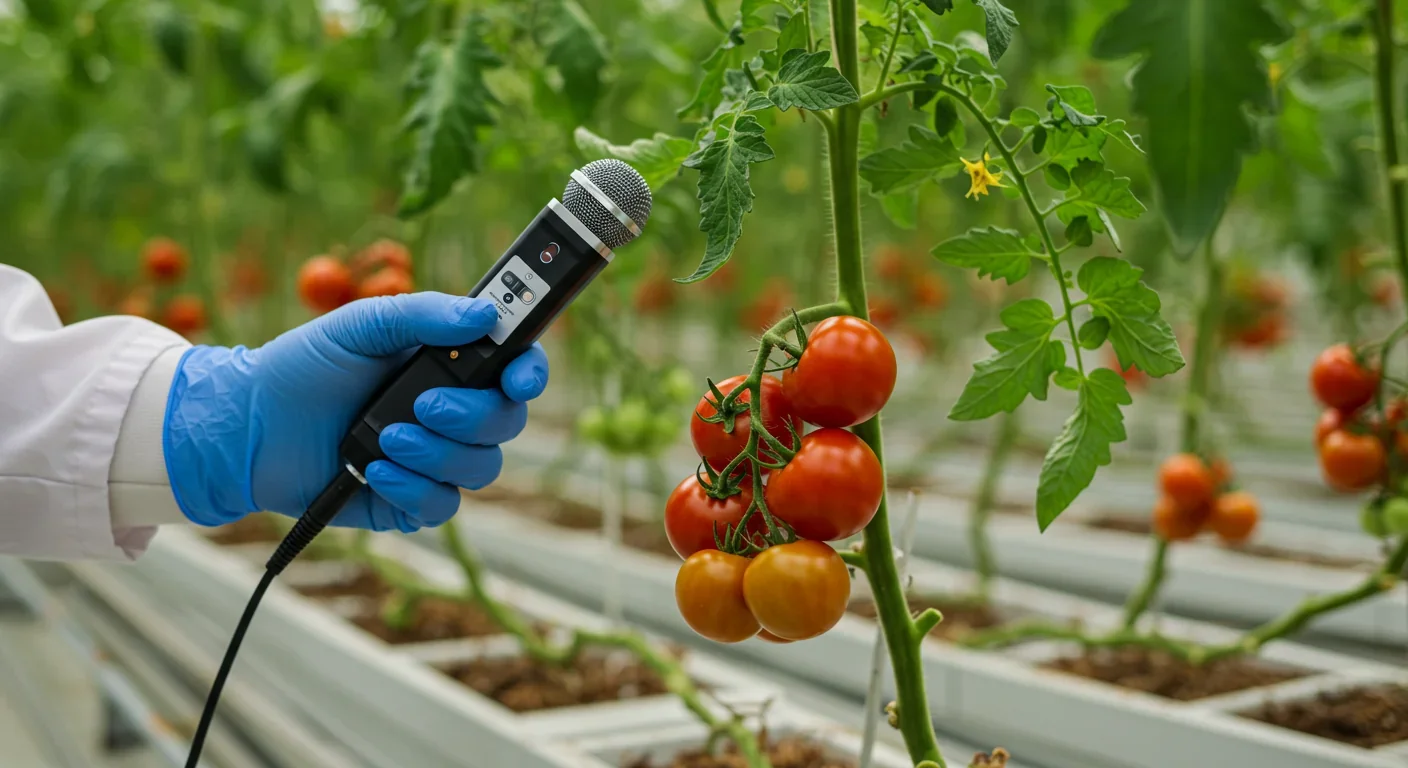
TL;DR: Mass coral spawning synchronization is one of nature's most precisely timed events, but climate change threatens to disrupt it. Scientists are responding with selective breeding, controlled laboratory spawning, and automated monitoring to preserve reef ecosystems.
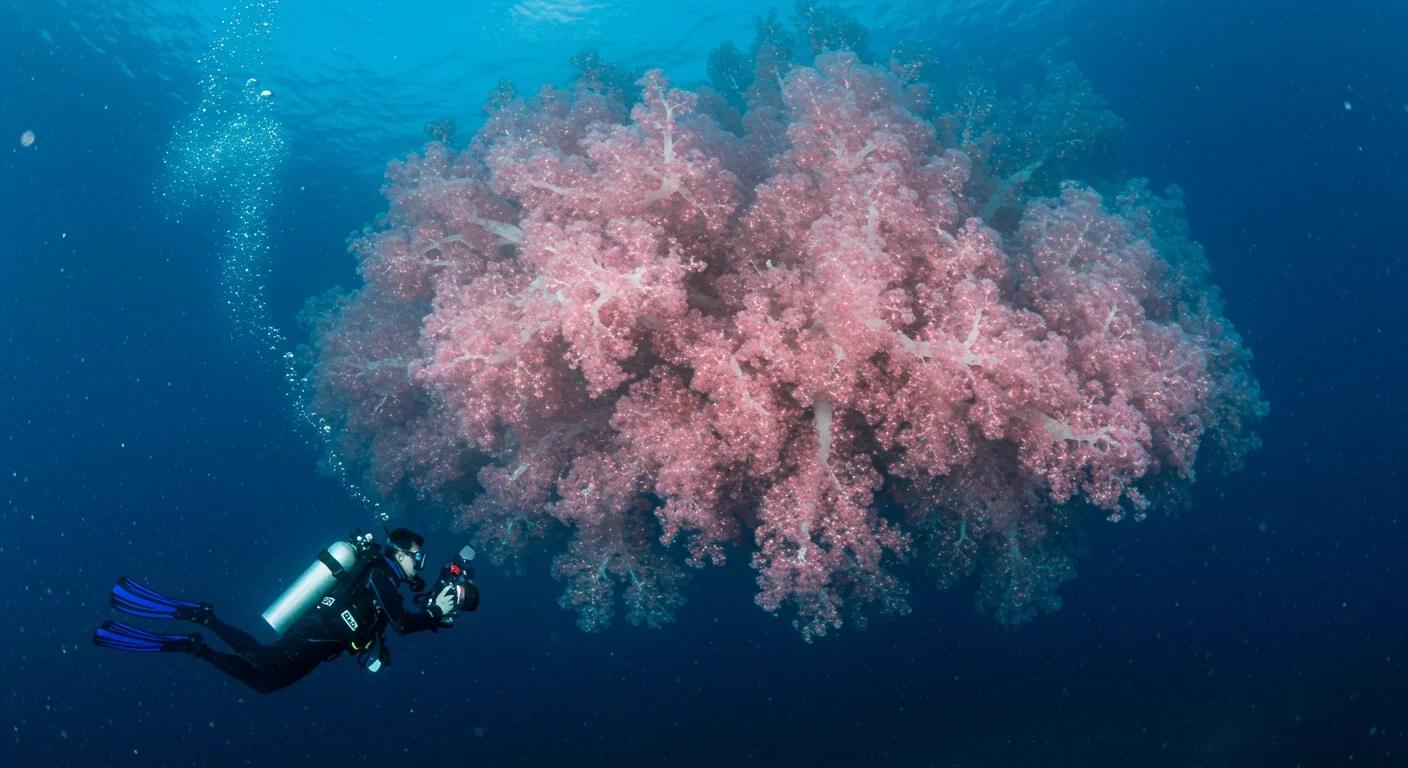
Every August, beneath the Gulf of Mexico's surface, something extraordinary happens. Within a narrow window of days, thousands of coral colonies simultaneously release millions of pink and white gametes into the water, transforming the ocean into what researchers call an "underwater snowstorm." This phenomenon—mass coral spawning—represents one of nature's most spectacular and precisely timed reproductive events, and scientists are only beginning to understand how it works.
The stakes couldn't be higher. With 84% of global reefs experiencing bleaching during recent warming events and coral cover declining rapidly, understanding spawning synchronization has become crucial for reef conservation. These annual reproduction bursts offer our best hope for reef resilience, yet climate change threatens to disrupt the delicate environmental cues that make them possible.
Coral spawning operates on a schedule more precise than most human calendars. At Flower Garden Banks in the Gulf of Mexico, spawning typically occurs 7-10 days after the August full moon. But there's a catch: if the full moon falls in early August or late July—or if two full moons appear in August—the event may shift to September entirely.
This isn't randomness. It's the result of coral colonies integrating multiple environmental signals simultaneously. Dr. Rebecca Albright, whose lab at the California Academy of Sciences has successfully induced coral spawning since 2018, explains the complexity: "We have to mimic seasonal cycles because it happens in summer, late summer. So we keep them in systems where every single day we've programmed in that the water temperature is iteratively changing, getting warmer in summer and then cooler in winter. And then we also have LEDs with different wavelengths of light where we have to simulate sunrises and sunsets. And we have blue LEDs and white LEDs where we mimic lunar cycles."
The cues matter because they create a narrow window where fertilization success peaks. About 75% of coral species are hermaphroditic broadcast spawners, meaning each colony produces both eggs and sperm and releases them simultaneously into the water column. For fertilization to succeed, millions of colonies across vast reef systems must release gametes at nearly the same moment—otherwise the ocean simply dilutes them too much.
Research shows corals respond to multiple overlapping signals: seasonal water temperature changes, photoperiod shifts, and lunar illumination patterns. The full moon serves as the final trigger, but only after months of environmental conditioning. This is why controlled laboratory spawning requires a six-month offset environmental profile encompassing temperature, photoperiod, and lunar cues—miss any element and the corals won't spawn.
Here's what baffles scientists: How do thousands of coral colonies, scattered across hundreds of square miles of reef, spawn within the same few hours? The environmental cues explain why spawning happens in August, but not how individual colonies coordinate timing down to the minute.
"The exact environmental cues and communication mechanisms that enable thousands of coral colonies to spawn in near-synchrony remain a mystery," notes research from Flower Garden Banks. Current hypotheses suggest complex chemical signaling between colonies or shared photoperiod thresholds that act as natural timers, but neither theory has been definitively proven.
Recent observations from Zanzibar add another layer of complexity. Researchers documented the first in situ spawning records for three Scleractinian species and found species-specific timing: Galaxea astreata spawned on the second night after the full moon in November and December, while Favites pentagona spawned on the fourth night in November, and Platygyra daedalea on the fourth night in December and January.
This species-specific timing suggests spawning synchronization operates at multiple scales simultaneously—coordination between colonies of the same species, and temporal separation between different species sharing the same reef. The precision implies something more sophisticated than passive response to environmental cues alone.
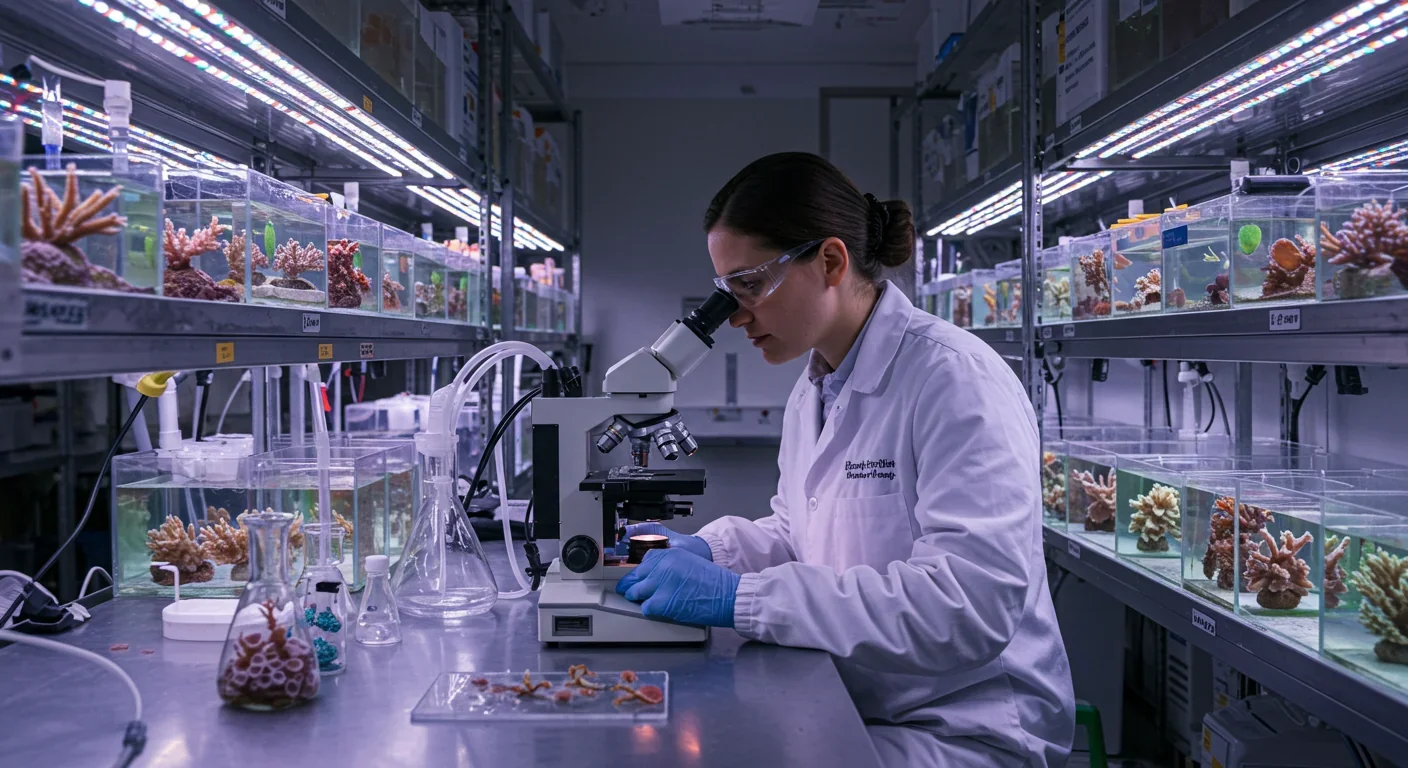
The ecological stakes of mass spawning are immense. About 25% of all ocean life depends on coral reefs, yet reefs occupy less than 1% of the ocean floor. This means reef health determines survival for vast swaths of marine biodiversity, making successful spawning events absolutely critical.
But reproduction via broadcast spawning is inherently risky. Corals release their gametes into open water, where currents disperse them across miles of ocean. Predators feast on the sudden abundance of protein-rich eggs and sperm. The timing window for successful fertilization is measured in hours, not days—after that, the gametes die.
Synchronization addresses these risks through sheer overwhelming numbers. When millions of colonies spawn simultaneously, they create what ecologists call "predator satiation"—so many gametes that predators can't possibly consume them all. The survivors fertilize and develop into larvae that drift with currents for days or weeks before settling onto suitable substrate to begin new colonies.
This is why timing precision matters so much. Research on spawn collection shows that even collection method and timing dramatically affect larval quality. When spawn is collected within the first hour post-fertilization, fragmentation rates stay below 4%. Wait 5-11 hours and fragmentation jumps above 45%, significantly reducing larvae that survive to become new colonies. Settlement success drops from 25% for intact larvae to just 4% for deformed ones.
The narrow window between fertilization and development creates natural selection pressure favoring precise synchronization. Colonies that spawn even a few hours off-schedule produce larvae with dramatically lower survival rates.
Rising ocean temperatures threaten to break synchronization entirely. Coral spawning evolved over millions of years in relatively stable temperature regimes. Now temperatures are changing faster than corals can adapt, and the effects are already visible.
When Dr. Albright discusses the state of global reefs, the numbers are stark: "the elephant in the room at this point in this time is global warming...where we're seeing 84% of the reefs worldwide bleaching at the exact same time." Bleaching is a stress response where corals expel their symbiotic algae, losing both their color and primary food source. While corals can survive bleaching, it dramatically reduces their energy reserves and reproductive capacity.
Temperature changes affect spawning in multiple ways. First, they shift the seasonal temperature curves that corals use as spawning cues, potentially advancing or delaying spawning windows. Second, heat stress reduces gamete production and quality. Third, warming may desynchronize spawning between colonies if temperature thresholds are crossed at slightly different times across a reef system.
Research from the Western Indian Ocean demonstrates that local spawning patterns differ from global patterns, underscoring how sensitive spawning timing is to regional environmental conditions. As climate change creates more variability in local temperature, light, and current patterns, we may see increasing mismatches in spawning synchronization.
Ocean acidification compounds these problems. As the ocean absorbs excess atmospheric CO2, water chemistry shifts, making it harder for coral larvae to build their calcium carbonate skeletons. Even if spawning succeeds, larval survival and settlement may decline.
Scientists aren't waiting for nature to adapt on its own. Multiple research teams are now inducing coral spawning in controlled laboratory settings, learning how to trigger and optimize reproduction events that were once considered nearly impossible to replicate outside natural reefs.
The California Academy of Sciences' lab has successfully spawned corals since 2018, and in June 2025, Dr. Albright's team outplanted over 3,000 baby corals onto a reef in Roatan, Honduras. These weren't natural recruits—they were laboratory-grown from controlled spawning events, raised through their vulnerable larval stage, and then transplanted to degraded reef areas.
But perhaps most promising is selective breeding for climate resilience. Research on Acropora species from Western Australia's Ningaloo reefs shows that selective breeding can enhance coral heat tolerance even when parental populations differ by less than 1°C in thermal history. The study found that larvae with at least one parent from a warmer reef site showed 1.6-2.2 times higher survival under heat stress compared to larvae from cooler populations.
This represents the first empirical evidence that a single generation of selective breeding can produce measurable heat tolerance improvements. Larval survival under heat stress jumped from 44.7% for cool-reef parents to 66.2% when one parent came from the warmer site—a 2.2-fold improvement.
Interestingly, adult corals from both thermal backgrounds showed similar heat responses, suggesting that enhanced thermal tolerance is most pronounced in early life stages. This makes intuitive sense: larvae are the dispersal stage, the pioneers that must survive in potentially variable thermal environments before settling.
The catch? Parental effects appear species-specific. In Acropora tenuis, maternal origin has stronger influence on offspring heat tolerance, while in Acropora millepora, both parents contribute equally. This means effective breeding programs must be tailored to individual species rather than applying one-size-fits-all approaches.
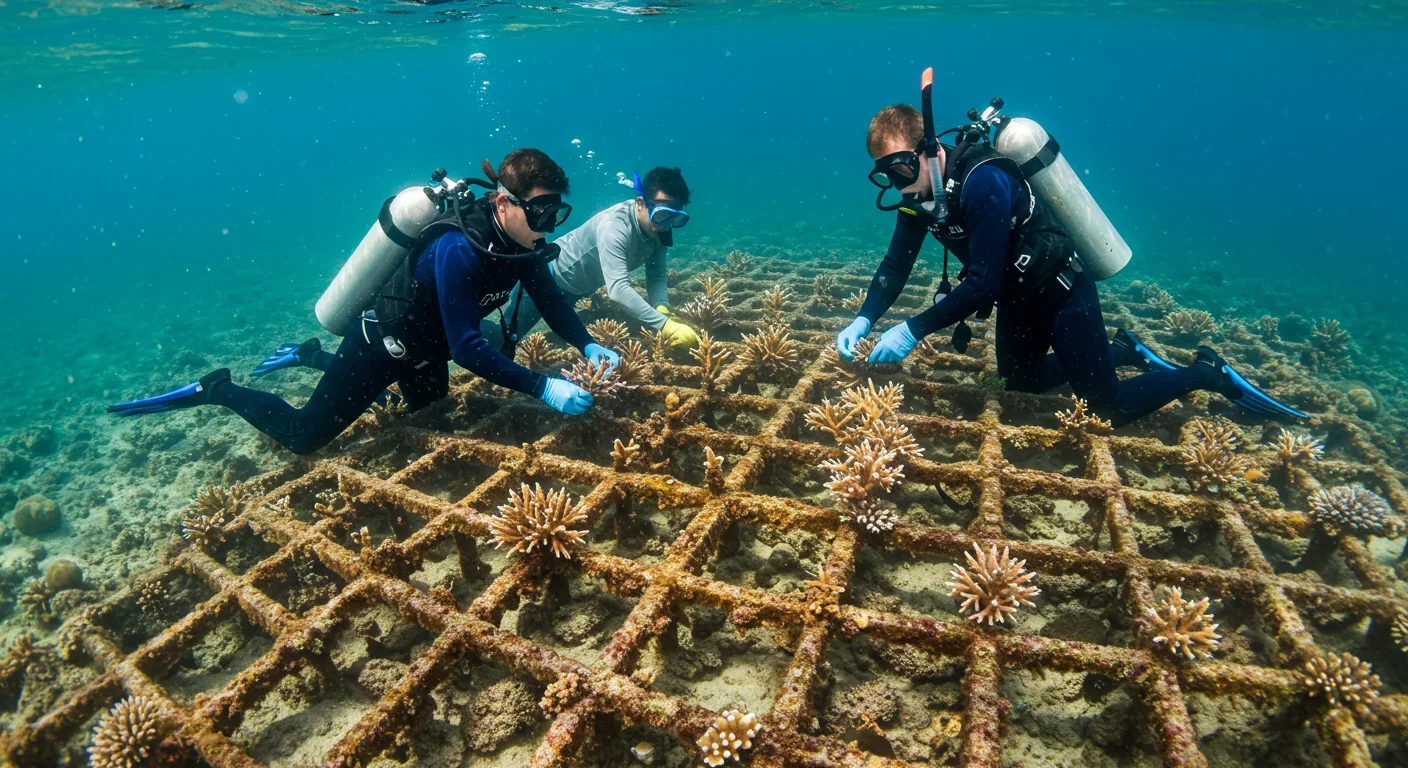
Understanding spawning is one thing. Monitoring it across vast reef systems and multiple spawning seasons is another challenge entirely. Traditional methods required teams of divers making manual observations and spawn counts throughout the night—labor-intensive, expensive, and limited in scope.
Automated monitoring systems are changing this calculus. The Coral Spawn and Larvae Imaging Camera System (CSLICS) uses modular, low-cost cameras (approximately $1,000 per unit) to continuously photograph spawning tanks every 10 seconds. Computer vision algorithms trained on human-labeled images then count spawn at different developmental stages, tracking fertilization success and larval density in real-time.
CSLICS achieved an F1 accuracy score of 82.4% for surface spawn detection and 65.3% for subsurface detection across different embryonic stages. More importantly, deployment during Great Barrier Reef spawning events saved an estimated 5,720 hours of manual sampling labor per spawning event.
This isn't just about efficiency. High-frequency automated monitoring reveals intra-event variability in spawn distribution that manual counting simply cannot capture. When you can check spawn density every 10 seconds instead of every few hours, you detect rapid changes in fertilization success and can intervene early if problems develop.
Underwater camera systems deployed by conservation groups like Blue Alliance in Zanzibar's Pemba Channel take a different approach, using photo bursts every five minutes to document wild spawning events without requiring divers in the water all night. These observations build long-term datasets on spawning timing and success rates across seasons and years—the baseline data needed to detect climate-driven shifts in spawning patterns.
The first documented observation at Flower Garden Banks occurred August 13, 1990, when divers aboard the vessel Fling witnessed the phenomenon. Since then, sanctuary researchers have meticulously recorded each spawning event, building a 35-year dataset that now serves as a baseline for monitoring how spawning responds to changing ocean conditions.
As monitoring expands globally, a fascinating pattern emerges: while the mechanisms of spawning synchronization appear universal, the specific timing varies dramatically by region and even between nearby reef systems.
Research from Ningaloo in Western Australia revealed that reefs separated by less than 100 kilometers—and experiencing mean temperature differences under 1°C—showed measurable differences in heat tolerance and spawning success. The northern reef, which had experienced more severe bleaching events, produced larvae with higher heat tolerance when crossed with southern populations.
This suggests corals are adapting to local conditions faster than expected, developing region-specific physiological traits even across relatively small spatial scales. The implications for conservation are significant: restoration programs must source breeding stock from thermally diverse populations and potentially move heat-tolerant genetics to at-risk reefs.
Zanzibar observations showed species-specific spawning nights that differed from patterns documented elsewhere, highlighting that local environmental cues can override global spawning calendars. What works as a spawning predictor in the Caribbean may not apply in the Western Indian Ocean, and monitoring programs must account for regional variation.
Understanding spawning synchronization has moved from pure science to applied conservation strategy. Here's what the research tells us works:
Protect existing spawning aggregations. Flower Garden Banks sanctuary demonstrates that marine protected areas with strong management can maintain healthy spawning populations even as surrounding reefs decline. These refugia serve as seed sources for degraded areas.
Support coral biobanking. Laboratory facilities that can induce controlled spawning year-round provide insurance against catastrophic reef loss. Out-of-season spawning techniques allow researchers to produce up to 2 million larvae from a single controlled event, dramatically expanding restoration potential.
Optimize spawn collection timing. For restoration programs that harvest wild spawn, collection within the first hour post-fertilization minimizes fragmentation. Bucket collection preserves larval quality better than nets or pumps, though nets produce larger larvae if practitioners accept higher deformity rates.
Invest in selective breeding. Even small thermal gradients between parent populations can improve offspring heat tolerance. Programs should cross-breed corals from warmer and cooler sites within the same reef system to enhance resilience in outplanted colonies.
Deploy automated monitoring. As camera systems become cheaper and more accurate, they enable continuous observation of spawning timing and success across multiple sites simultaneously, building the datasets needed to predict and respond to climate-driven shifts.
Fund regional spawning studies. The Zanzibar findings underscore that we cannot extrapolate global spawning calendars to all regions. Local monitoring reveals region-specific patterns essential for targeted conservation.
Coral spawning synchronization represents millions of years of evolutionary fine-tuning—colonies coordinating reproduction across vast distances using environmental cues calibrated to historical ocean conditions. That precision now works against corals as those conditions shift faster than evolution typically operates.
Yet the same biological sensitivity that makes corals vulnerable to climate change also makes them responsive to human intervention. Selective breeding shows measurable results within a single generation. Controlled spawning allows year-round reproduction. Automated monitoring reveals patterns invisible to traditional observation.
The question isn't whether we can help coral reefs adapt to warming oceans—recent research proves we can. The question is whether we'll implement these interventions at the scale and speed necessary to preserve functional reef ecosystems. Every spawning season that passes while reefs decline is one fewer opportunity to collect diverse genetic material for breeding programs. Every bleaching event that reduces reproductive output makes recovery harder.
Coral reefs support a quarter of marine life while occupying less than one percent of ocean area. That efficiency depends entirely on successful spawning synchronization—the brief windows when the ocean transforms into an underwater snowstorm and billions of new coral colonies begin their journey. As those windows grow narrower under climate pressure, our interventions must grow bolder.
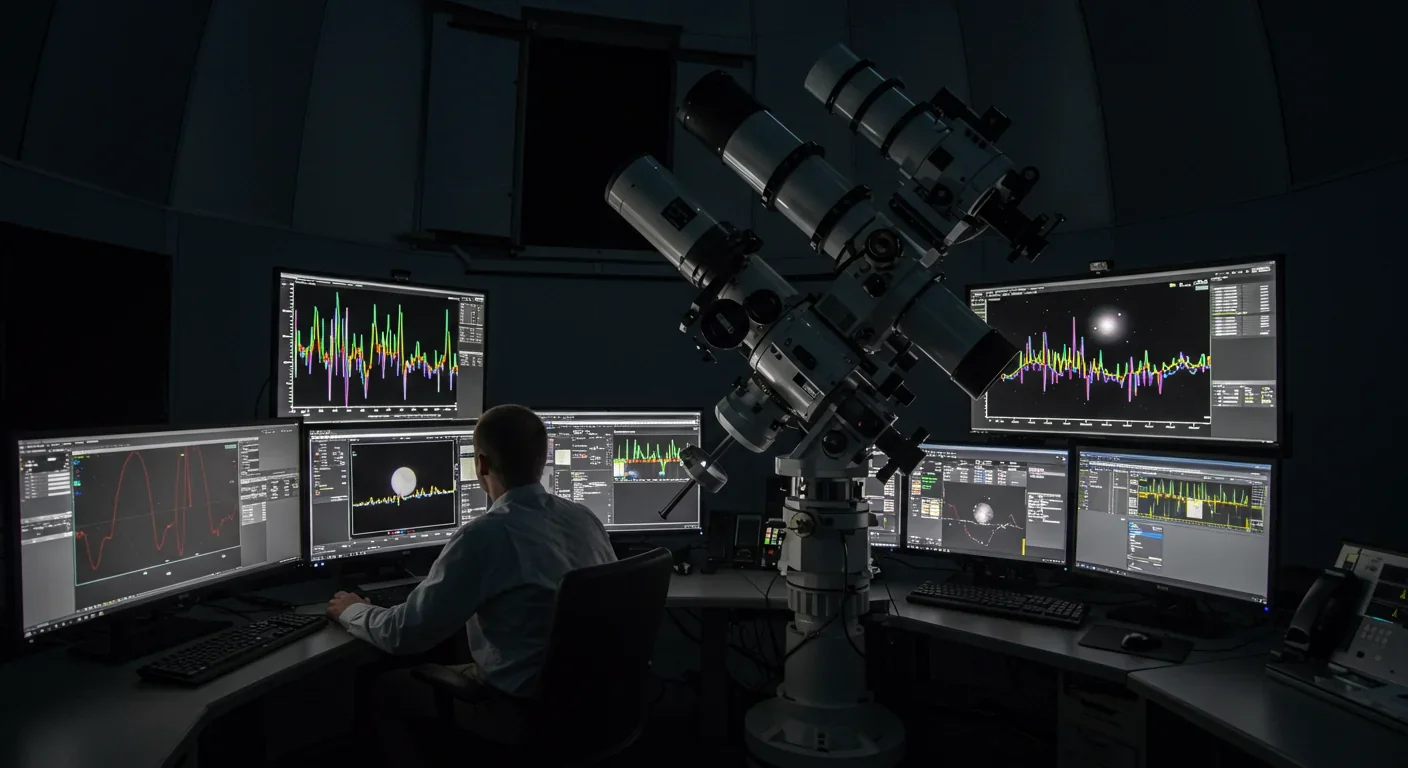
Over 80% of nearby white dwarfs show chemical fingerprints of destroyed planets in their atmospheres—cosmic crime scenes where astronomers perform planetary autopsies using spectroscopy. JWST recently discovered 12 debris disks with unprecedented diversity, from glassy silica dust to hidden planetary graveyards invisible to previous surveys. These stellar remnants offer the only direct measurement of exoplanet interiors, revealing Earth-like rocky worlds, Mercury-like metal-rich cores, and ev...

Hidden mold in homes releases invisible mycotoxins—toxic chemicals that persist long after mold removal, triggering chronic fatigue, brain fog, immune dysfunction, and neurological damage. Up to 50% of buildings harbor mold, yet most mycotoxin exposure goes undetected. Cutting-edge airborne testing, professional remediation, and medical detox protocols can reveal and reverse this silent epidemic, empowering individuals to reclaim their health.

Data centers consumed 415 terawatt-hours of electricity in 2024 and will nearly double that by 2030, driven by AI's insatiable energy appetite. Despite tech giants' renewable pledges, actual emissions are up to 662% higher than reported due to accounting loopholes. A digital pollution tax—similar to Europe's carbon border tariff—could finally force the industry to invest in efficiency technologies like liquid cooling, waste heat recovery, and time-matched renewable power, transforming volunta...

Transactive memory is the invisible system that makes couples, teams, and families smarter together than apart. Psychologist Daniel Wegner discovered in 1985 that our brains delegate knowledge to trusted partners, creating shared memory networks that reduce cognitive load by up to 40%. But these systems are fragile—breaking down when members leave, technology overwhelms, or communication fails. As AI and remote work reshape collaboration, understanding how to intentionally build and maintain ...

Mass coral spawning synchronization is one of nature's most precisely timed events, but climate change threatens to disrupt it. Scientists are responding with selective breeding, controlled laboratory spawning, and automated monitoring to preserve reef ecosystems.

Your smartphone isn't just a tool—it's part of your mind. The extended mind thesis argues that cognition extends beyond your skull into devices, AI assistants, and wearables that store, process, and predict your thoughts. While 79% of Americans now depend on digital devices for memory, this isn't amnesia—it's cognitive evolution. The challenge is designing tools that enhance thinking without hijacking attention or eroding autonomy. From brain-computer interfaces to AI tutors, the future of co...

Transformers revolutionized AI by replacing sequential processing with parallel attention mechanisms. This breakthrough enabled models like GPT and BERT to understand context more deeply while training faster, fundamentally reshaping every domain from language to vision to multimodal AI.